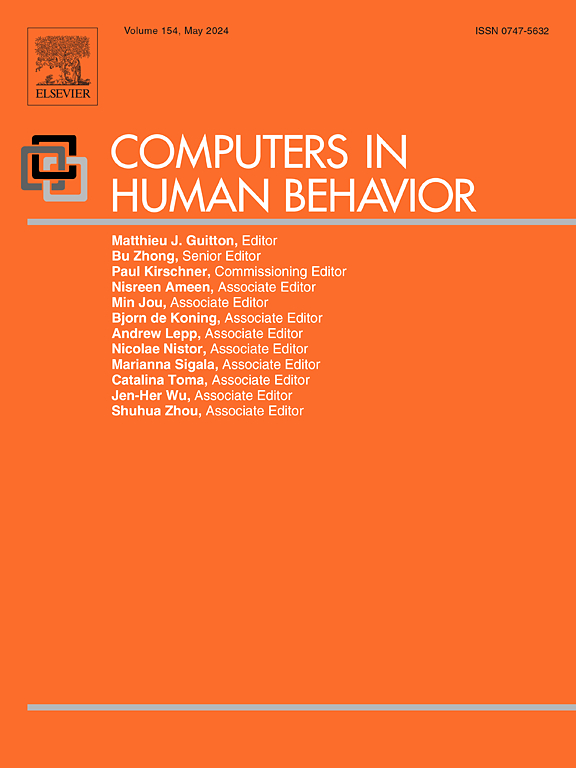揭开数字镜子的面纱解码 instagram 图像中的性别身体姿势
IF 9
1区 心理学
Q1 PSYCHOLOGY, EXPERIMENTAL
引用次数: 0
摘要
社交媒体平台对全世界人们的日常生活产生了重大影响,社交媒体上的图像已成为人们实践自我观点并向他人传达的重要手段。尽管有相当一部分人经常在社交媒体上上传自我展示,但社会科学及相关学科对这一有关个人、群体和社会的信息来源的研究仍然不足。在我们的研究中,我们关注的是社交媒体上自拍照中的性别陈规定型身体姿势。虽然社会学对性别刻板印象的研究已有数十年历史,但对于数字环境中的表现形式以及新形式的刻板印象,研究还缺乏实证证据。我们将神经网络姿势检测与无监督学习方法相结合,并将该方法应用于社交媒体平台 Instagram 的数据,从而提出了一种可扩展、可转移的方法来分析图像中的身体姿势。基于应用于性别注释图像的聚类算法,我们识别出了 150 个人体姿势聚类。我们的结果显示,20% 的聚类存在明显的性别差异,其中许多聚类代表了社会学文献中提到的性别刻板身体姿势。此外,我们还能识别出与智能手机技术和社交媒体趋势相关的新的刻板姿势。这项研究代表了一种利用大规模图像数据进行社会科学研究的新方法,有助于更好地理解性别刻板印象在数字领域的巩固和复制。本文章由计算机程序翻译,如有差异,请以英文原文为准。
Unveiling digital mirrors: Decoding gendered body poses in instagram imagery
Social media platforms have had a significant impact on people's everyday lives worldwide and imagery on social media has become a vital means of practicing views of the self and communicating them to others. Albeit a significant proportion of people frequently upload self-representations on social media, this source of information on individuals, groups, and societies remains under-examined within the social sciences and neighboring disciplines. In our study, we focus on gender-stereotypical body-posing in self-portraits on social media. While sociology has examined gender stereotypes for decades, research lacks empirical evidence on representations in digital contexts as well as novel forms of stereotyping. We present a scalable and transferable methodology for analyzing body poses in images by combining neural network pose detection with an unsupervised learning approach and applying this methodology to data from the social media platform Instagram. Based on a clustering algorithm applied to gender-annotated imagery, we identify 150 body posing clusters. Our results reveal significant gender differences in 20 percent of clusters, many of which represent gender-stereotypical body poses addressed in sociological literature. Moreover, we can identify new stereotypical poses related to smartphone technology and social media trends. This study represents a novel approach to utilizing large-scale image data for social science research and contributes to a better understanding of the consolidation and reproduction of gender stereotypes in digital realms.
求助全文
通过发布文献求助,成功后即可免费获取论文全文。
去求助
来源期刊

Computers in Human Behavior
Multiple-
CiteScore
19.10
自引率
4.00%
发文量
381
审稿时长
40 days
期刊介绍:
Computers in Human Behavior is a scholarly journal that explores the psychological aspects of computer use. It covers original theoretical works, research reports, literature reviews, and software and book reviews. The journal examines both the use of computers in psychology, psychiatry, and related fields, and the psychological impact of computer use on individuals, groups, and society. Articles discuss topics such as professional practice, training, research, human development, learning, cognition, personality, and social interactions. It focuses on human interactions with computers, considering the computer as a medium through which human behaviors are shaped and expressed. Professionals interested in the psychological aspects of computer use will find this journal valuable, even with limited knowledge of computers.
 求助内容:
求助内容: 应助结果提醒方式:
应助结果提醒方式:


